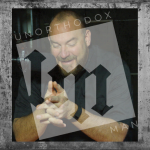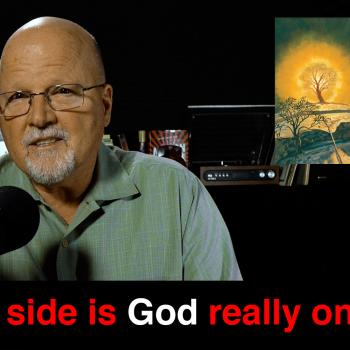
The Compelling Historical Evidence for the Resurrection of Jesus
In this session, I look at the historical evidence for the resurrection of Jesus. This is an exciting time in studies about the truth of the Easter story (not the bunny one, the other one!). This will encourage your heart and strengthen your faith.
 The Jon Morrison Podcast: The Compelling Historical Evidence for the Resurrection of Jesus Play Now | Play in Popup | Download
The Jon Morrison Podcast: The Compelling Historical Evidence for the Resurrection of Jesus Play Now | Play in Popup | Download10 FACTS ABOUT WHAT HAPPENED TO JESUS OF NAZARETH
The following ten “minimal facts” are accepted by historians, both secular and Christian; liberal and conservative. The back page of this booklet will look at possible explanations regarding what to make of all this data. (This approach is based on the work of Gary Habermas, Craig Hazen and Mike Licona)
- Jesus died by crucifixion.
- There are 11 independent sources from antiquity that mention the death of Jesus. This is called a “historical fact” by skeptical scholars like Gerd Ludemann (The Resurrection of Christ: A Historical Inquiry, 2004 p50) and John Dominic Crossan (The Historical Jesus. The Life of a Mediterranean Jewish Peasant. San Francisco, CA, 1991, p375).
- NT skeptic Bart Ehrman says the reality of Jesus’ life and death is not worth arguing about. (Did Jesus Exist?, Harper One, New York, NY, 2012, p130-140).
- Jesus was buried in a tomb.
- John A. T. Robinson of Cambridge University writes of the burial of Jesus in the tomb as “one of the earliest and best-attested facts about Jesus.” (The Human Face of God, Philadelphia: Westminster, 1973, p. 131)
- The disciples despaired and lost hope, thinking that Jesus’ life and ministry was over.
- This is not difficult to back up given the tremendous loss that a dying Messiah and friend would have felt like to them.
- The tomb was found to be empty.
- Austrian scholar, Jacob Kremer has said “By far most exegetes hold firmly to the reliability of the biblical statements about the empty tomb.” In his work, Die Osterevangelism (Stuggart: Katholisches Bibelwerk,, 1977. p49-50) he lists twenty-eight other scholars who back up this claim as well.
- Jesus’ followers had actual experiences that they believed to be experiences with the risen Jesus.
- Reginald Fuller “The ‘irreducible historical minimum behind the Easter narratives’ is a ‘well-based claim of certain disciples to have had visions of Jesus after his death as raised from the dead.’”
- Fuller elsewhere refers to the disciples’ belief in the resurrection as “one of the indisputable facts of history.” He calls this claim “a fact upon which both believer and unbeliever may agree.” (The Formation of the Resurrection Narratives, p 169, 181-182.)
- The disciples were transformed from doubters to bold proclaimers of Jesus’ death and resurrection.
- Bart Ehrman explains that, “Historians, of course, have no difficulty whatsoever speaking about the belief in Jesus’ resurrection, since this is a matter of public record. For it is a historical fact that some of Jesus’ followers came to believe that he had been raised from the dead soon after his execution.” (Jesus: Apocalyptic Prophet of the New Millennium, New York: Oxford University Press, 1999, p231).
- The resurrection message became the center of preaching.
- Critical scholar James D. G. Dunn recently wrote in his book Remembering Jesus (p. 855) that 1 Corinthians 15:3-8 was an established Christian creed. It was formalized and taught within months of Jesus’ death.
- This resurrection message was proclaimed in Jerusalem where Jesus died and was buried.
- Roman historian Tacitus reports that Christianity first spread throughout Judea before it went to Rome (see Annals 15:44)
- Sunday became the day of worship for the early Christian church.
- Justin Martyr, a second century writer, explains the reasoning behind the Christian day of worship: “Sunday is the day on which we all hold our common assembly, because it is the first day on which God, having wrought a change in the darkness and matter, made the world; and Jesus Christ our Saviour on the same day rose from the dead.” (The First Apology)
- Paul was originally a skeptic and persecutor of Christianity. He later converted to Christianity after what he believed was an encounter with the risen Jesus.
- Historian E.P. Sanders affirms, “That Jesus’ followers (and later Paul) had resurrection experiences is, in my judgment, a fact. What the reality was that gave rise to the experiences, I do not know.” Taken from The Historical Figure of Jesus (London: Penguin, 1993), 11; cf. 10-13.
“WHAT HAPPENED TO JESUS OF NAZARETH?” HYPOTHESES
The disciples mistakenly went to the wrong tomb. That’s why they thought it was empty.
- The historical problems with this: 5 – 10
Jesus, the “risen Son of God”, was a legend that developed over time.
- The historical problems with this: 1-10
Jesus had a twin brother who showed up after his brother was crucified.
- The historical problems with this: 4, 6, 10
The disciples hallucinated; thinking that they had seen Jesus alive after he was crucified.
- The historical problems with this: 4, 10
Jesus was raised spiritually; not physically. He lives within the hearts of his disciples.
- The historical problems with this: 4, 5, 7, 10
The disciples stole the dead body of Jesus and told everyone he was alive.
- The historical problems with this: 5, 6, 10
The authorities (Roman or Jewish) stole the body of Jesus.
- The historical problems with this: 5-10
Jesus never really died. He was revived in the tomb and convinced everyone that he was actually resurrected.
- The historical problems with this: 1, 6
Christians believe the best conclusion for all the historical data is the one the church has been proclaiming for two millennia now: “God raised Jesus from the dead.
(This podcast is by Jon Morrison. Discovered by Christian Podcast Central
and our community — copyright is owned by the publisher, not Christian Podcast Central, and audio is streamed directly from their servers.)












